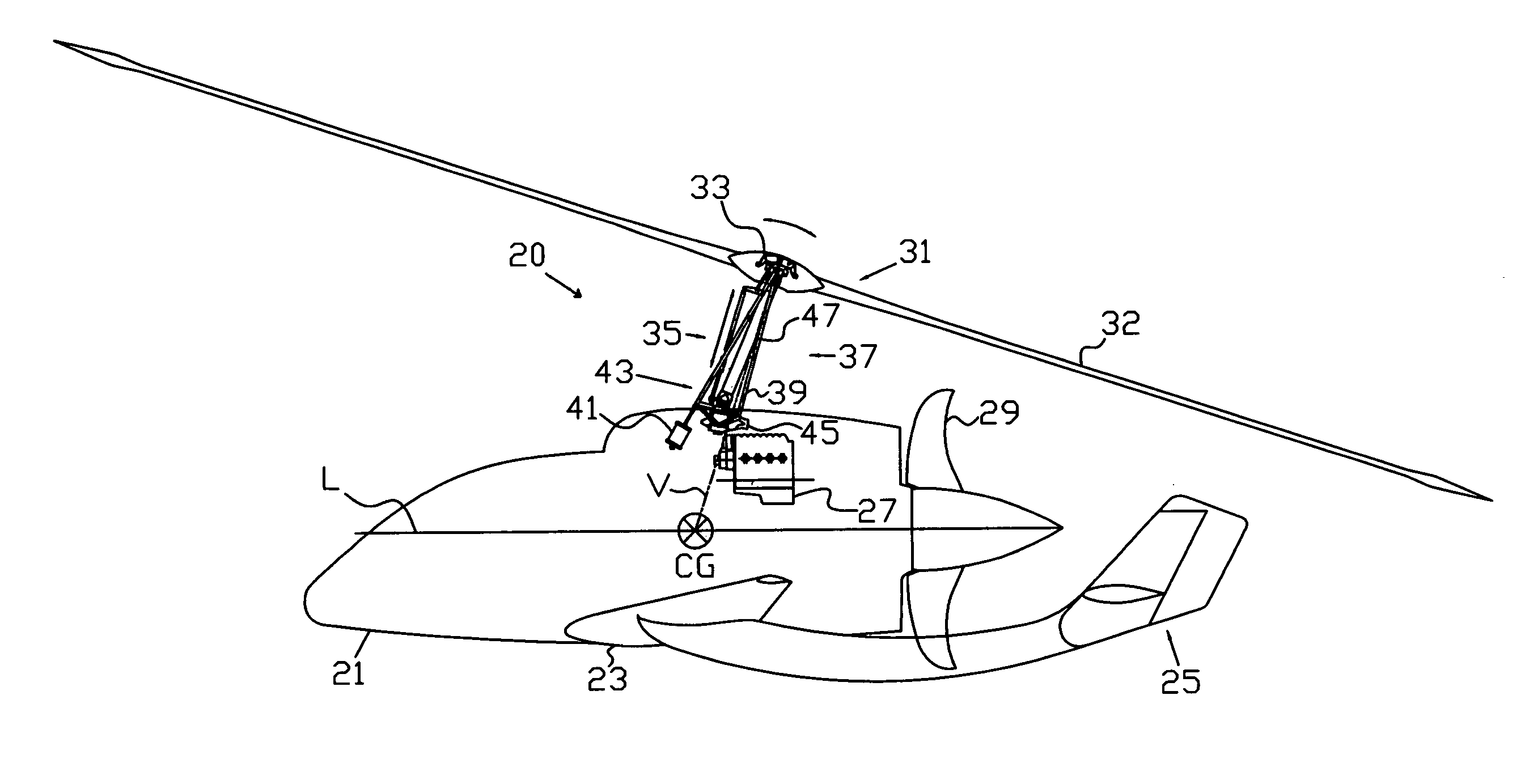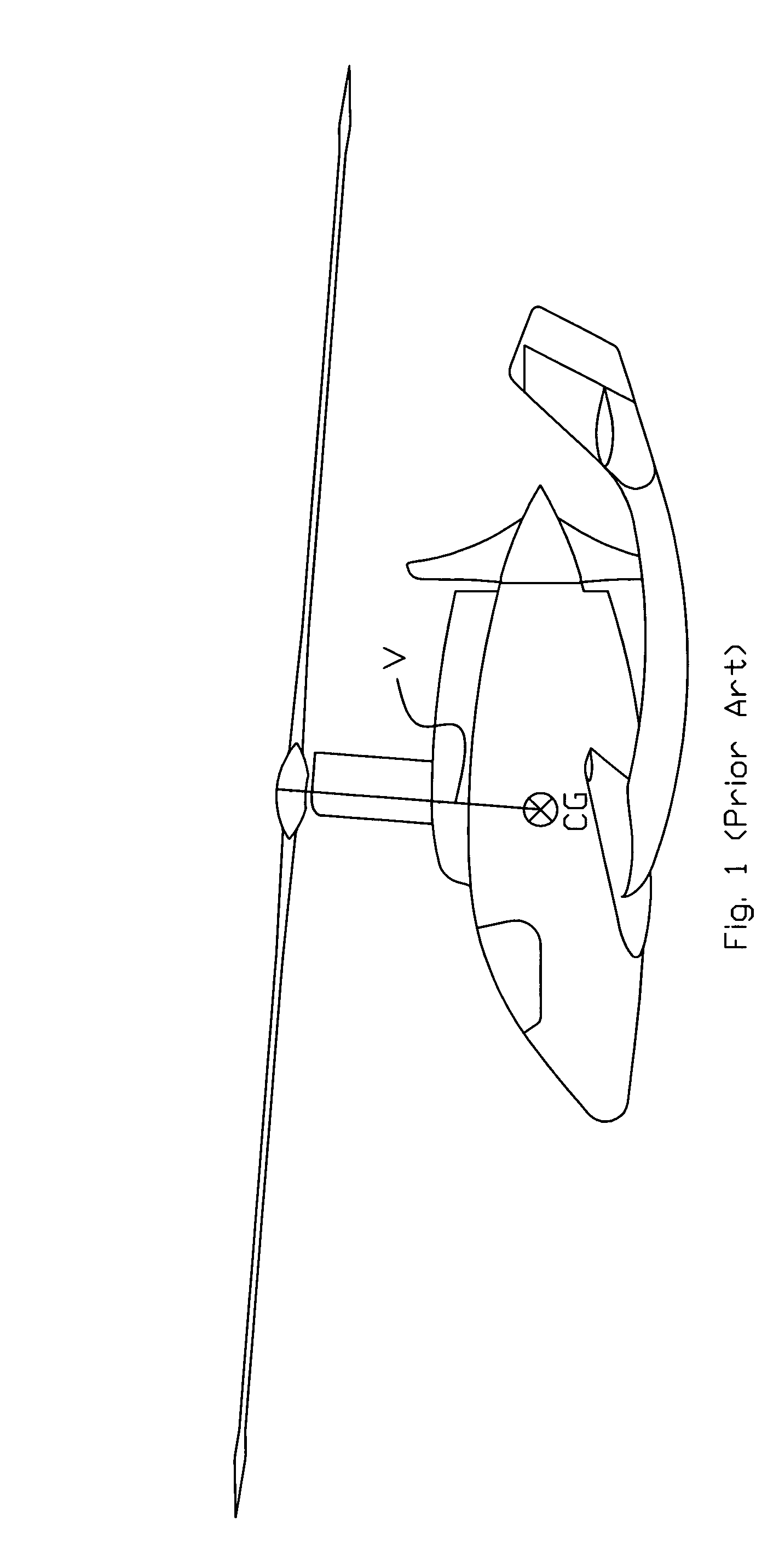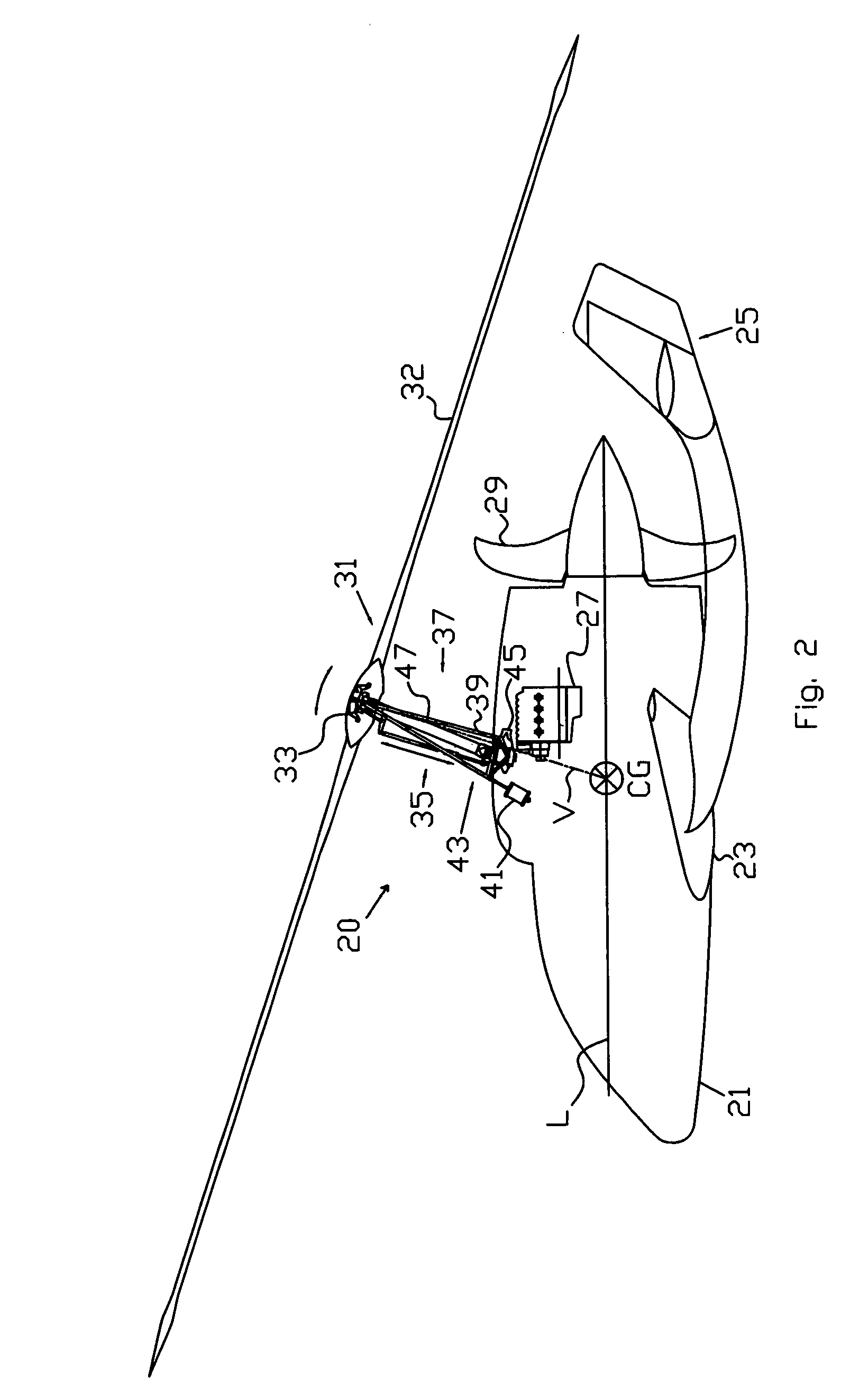Tilting mast in a rotorcraft
a rotorcraft and tilting technology, applied in the field of rotary wing aircraft, can solve the problems of large and sometimes undesirable fuselage attitudes, undesirable attitudes, and the helicopter's fuselage also tilting nose down, and achieve the best lift-to-drag ratio, reduce parasitic drag, and reduce the effect of rotor lift requirements
- Summary
- Abstract
- Description
- Claims
- Application Information
AI Technical Summary
Benefits of technology
Problems solved by technology
Method used
Image
Examples
Embodiment Construction
[0027]The present invention will now be described more fully hereinafter with reference to the accompanying drawings which illustrate embodiments of the invention. This invention may, however, be embodied in many different forms and should not be construed as limited to the illustrated embodiments set forth herein. Rather, these embodiments are provided so that this disclosure will be thorough and complete, and will fully convey the scope of the invention to those skilled in the art. Like numbers refer to like elements throughout, and the prime notation, if used, indicates similar elements in alternative embodiments.
[0028]Referring to FIG. 1, shown is a simplified model of a conventional fixed mast in a rotorcraft having a longitudinal axis passing through or near the design gross weight, and design configuration, aircraft center of gravity CG. The rotorcraft or rotary wing aircraft has blades that rotate to describe or form a plane of rotation (“rotor disc”) and which produces a re...
PUM
 Login to View More
Login to View More Abstract
Description
Claims
Application Information
 Login to View More
Login to View More - R&D
- Intellectual Property
- Life Sciences
- Materials
- Tech Scout
- Unparalleled Data Quality
- Higher Quality Content
- 60% Fewer Hallucinations
Browse by: Latest US Patents, China's latest patents, Technical Efficacy Thesaurus, Application Domain, Technology Topic, Popular Technical Reports.
© 2025 PatSnap. All rights reserved.Legal|Privacy policy|Modern Slavery Act Transparency Statement|Sitemap|About US| Contact US: help@patsnap.com



